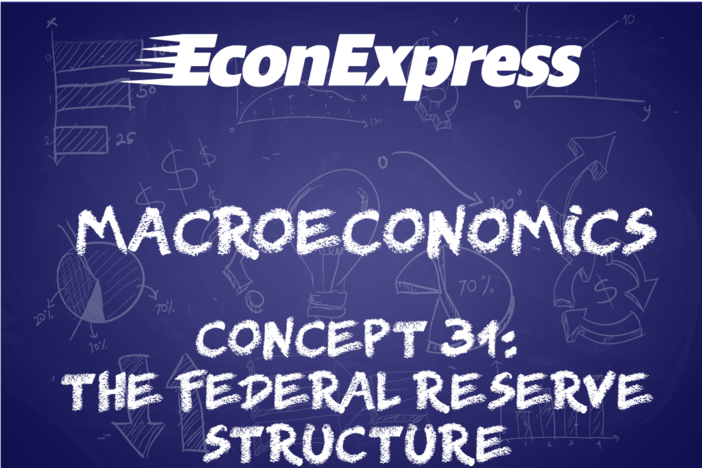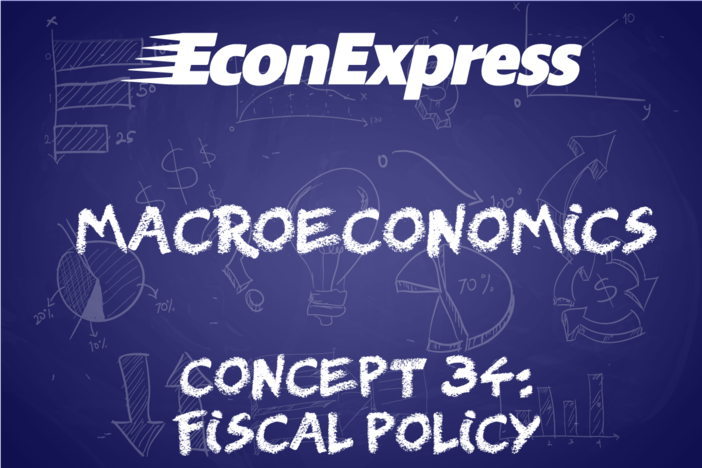Concept 31: The Federal Reserve Structure
Overview: Both a critically important institution and a complete mystery to many people, the Federal Reserve System is in charge of the U.S. money supply. Click here to learn how the organization operates.
Learn
Beginner
The Federal Reserve is the central bank of the United States. It oversees the nation’s money supply (through monetary policy), processes payments, and supervises and regulates banks. The U.S. Congress created the Federal Reserve in 1913 in order to stabilize the banking system. It originally had two parts, the Board of Governors and the regional Federal Reserve Banks.

The Board of Governors is located in Washington, D.C., and leads the Federal Reserve System. There are twelve regional reserve banks that serve as the operating arms for the System. The reserve banks are located in cities across the United States, and each one has smaller branch banks as well as seen in Image 31-1. Congress created the third part of the Federal Reserve, the Federal Open Market Committee, in 1933 and 1935.
Intermediate

The U.S. President nominates the seven people that make up the Board of Governors, and the U.S. Senate confirms the nominations. Governors can serve one 14-year term. The twelve regional reserve banks are each led by a president. Those presidents are selected by their reserve bank’s board of directors and approved by the Board of Governors.
The seven governors and the twelve regional reserve bank presidents serve on the Federal Open Market Committee (the FOMC). While all 19 members of the FOMC take part in the meetings, there are only 12 voting members. The seven governors and the president of the Federal Reserve Bank of New York always vote. The other four votes are cast by reserve bank presidents on a rotating basis.
Advanced

The three leadership positions of the Board of Governors are the Chair, the Vice-Chair, and the Vice-Chair of Supervision. Governors are nominated by the U.S. President to serve in these jobs. They also are confirmed by the U.S. Senate. The Chair of the Board of Governors serves as the Chair of the FOMC. The FOMC’s Vice-Chair is the president of the Federal Reserve Bank of New York. Each reserve bank has a nine-member board of directors. The board has three bankers from the region and six people from the community who are not bankers.
Click a reading level below or scroll down to practice this concept.
Practice
Assess
Below are five questions about this concept. Choose the one best answer for each question and be sure to read the feedback given. Click “next question” to move on when ready.
Social Studies 2024
Explain the role and functions of the Federal Reserve System.














